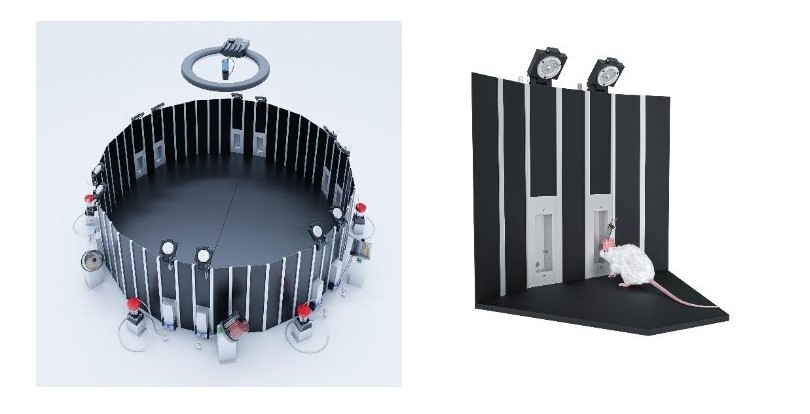Sound-guided behavior and neural dynamics in auditory cortex of freely-moving rats
We have developed an innovative experimental platform called the RIFF (Rodent Interactive Foraging Field) to investigate neural activity in freely-moving rats during complex behavioral tasks. This large, circular arena, measuring 1.6 meters in diameter, features multiple “interaction areas” that enable precise control over sensory stimuli and reward delivery. The RIFF allows for the presentation of auditory stimuli, delivery of food and water as rewards, and air-puffs for punishment. It has high-resolution tracking of rat behavior at 30 Hz, and simultaneous recording of neural activity (Jankowski et al., 2023).
Our recent RIFF studies investigating sound localization tasks have revealed large, structured, widespread activity patterns that are highly reproducible across trials and, surprisingly, not directly evoked by sounds or locomotion, although highly informative about the task. This new mode of activity in the auditory cortex shapes response properties to task-relevant sounds, rendering them weaker but more informative (Polterovich et al., 2024, bioRxiv).
Building on these discoveries, we are now expanding our investigations to include more complex behavioral paradigms. One such paradigm is a sequential decision task that allows us to compare neural activity during different phases of exploration. Additionally, we are implementing a continual learning task in which rats learn to recognize new sounds daily, enabling us to assess neural plasticity in real-time. These ongoing studies aim to elucidate the neural mechanisms underlying auditory processing and decision-making in naturalistic contexts, potentially leading to new insights into sensory perception and learning.

